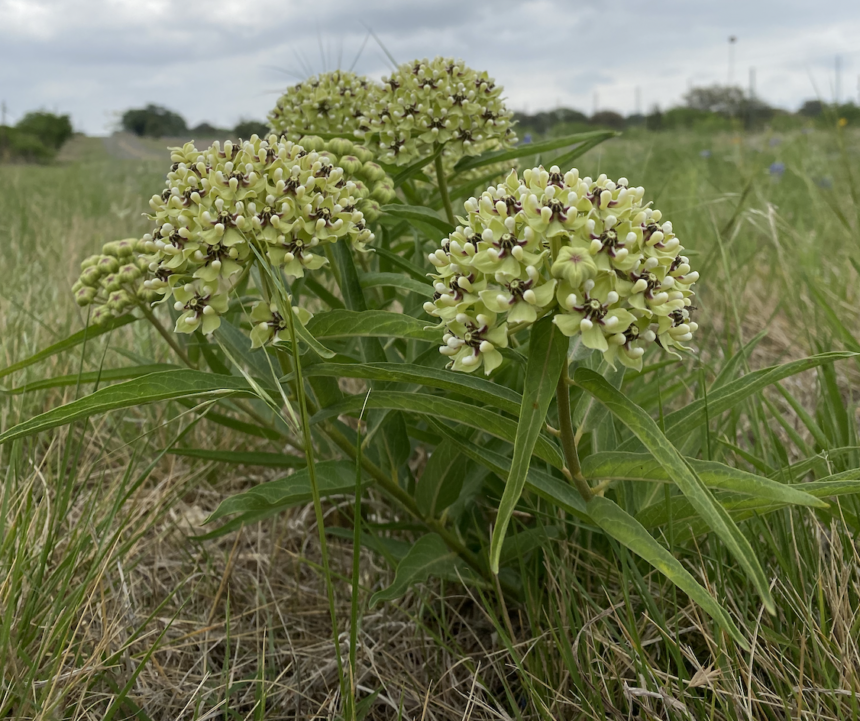Yo Howdy All Y’all – it is a beautiful day to be somewhere in our gardens!
A special thank you to our ever-learning and now pulpit preachin’ Associate Pastor Heidi for her patience
with me again for this overdue entry into this edition of the Window. Thank you, (I’m blaming our church
gardens – they make me late for work, too.)
Right now I’m sitting on the hilltop corner on one of benches made from brick and stone repurposed from the old brick-walled sign that blocked public view our beautiful courtyard and rose garden. Bravo to Brad for encouraging the lawn crew to make it healthy green, cooling and lush. It’s a shaded sanctuary beginning early afternoon…
The rest of our old church place is positively overgrown with weeds – sure, call ’em sunflowers if you’d like,
but they’re weeds. Positively. The big and beautiful mounding rosettes of fuzzy leaves, most now sending
up spires of little yellow blooms – the great mulleins (Verbascum thapsus) – are also weeds. Just another of
the greatly varied congregation of weeds welcomed and affirmed. Seems fitting to me.
Thank you to our Trustee’s Chair Preston for guiding me to learn more about the world-famous Chelsea
Garden Show in London that is going on right now. Several press accounts proclaim an over-riding theme
of this year’s show – as was intended by the presenting Royal Horticultural Society – is the “rebranding” of
“weeds” into “resilient bloomers”.
We’re way ahead of the curve here with our congregation of resilient bloomers. Seems true to me.
House and Garden Magazine writes of four trends from the 2023 Chelsea Garden Show. Seems we’re
trendsetters by having gardens of biodiversity for wildlife (although I do need to safeguard the artichokes
from the raccoons), by using natural walls (curiously, their definition includes rock, brick and concrete as
“natural walls”), by having gardens with trees and woodlands, and gardens with edible plants.
Some edible plants, I have learned, have already been rebranded as “edimentals”. (I hope we will have at
least one magnificent purple artichoke bloom.)
We also met all the stated “themes” of the Royal Horticultural Society for the show this year! Their first
theme: “weeds”. Second was the use of rubble.
Our San Antonio hillside just two years ago was eroding, in places revealing some of the rubble from the
demolition in the 1970’s of the Hunnicutt House – which was moved so our sanctuary could be built – to
where our parking lot is. In forming the San Antonio and alley corner terraces, bricks, tiles, broken glass
panes and bottles, and lots of small asphalt chunks) were discovered and put into purpose. Already growing
in that rubble then were several types of resilient bloomers trying to grow. Now they’re blooming.
This bench could be rubble, too, or maybe “symbolic art”, another theme. We have our sculpture “Grace”,
offering food to birds and wildlife, and there’s all sorts of symbolic art in our bean trellis and elsewhere.
Another theme – “Biophilia”: “a psychological orientation of being attracted to all that is alive and vital, of
creating the experience of being entirely enveloped by nature”. Check, aka: overgrown with weeds.
I’ve received a lot of help gardening, from homeless and hungry people, from folks who attend our worship
services, from neighbors and people who have appreciated driving by. I’ve long gardened (although the
spaces around my own home are overgrown with weeds) and after many years of erosion control land
restoration around land I steward in the country, I’ve come to learn what I call the practice of Gardening
with God. (It is not gardening for God – folks do all sorts of terrible things for the name of God.)
Gardening with God, all sorts of things happen suddenly, naturally, with patience. The rubble and dirt beside
the streets and along the alley – the hardened fallow ground – has become mostly nutrient rich and pliable
soil. The terraces formed in thin air with freeze killed trees and brush, covered with gathered leaves have by
Grace of time and rains composted into structure and form with good soil. The five sunflower weeds
transplanted three years ago from a US183 construction zone are now suddenly everywhere bringing a bit of
joy to anyone who chooses to notice, to hear the songs of the birds, to hear the words – “Love the Lord your
God with all your heart, soul and mind…Love your neighbor as yourself…”
From our gardens we are delivering each week several pounds of produce – and several pounds of herbs – for
the soups served by Angel’s House Soup Kitchen.
Equally enjoyable is witnessing strangers experience our garden – while attending weddings, funerals and
community gatherings, and by walking, biking or driving by. Our gardens are engaging our neighbors and
other visitors. So far, though, it has been just a few of us who have shared our gardens with our friends.
With so many varieties of “Christian” in the news, it can be difficult for even good friends and certainly for co
-workers to accept an invitation to join us at our church. There is for many now genuine hesitation of regret
for how many churches express the Love of Christ, and the blasphemy inherent inside some churches proclaiming to be Christian. Ask Aurora what her friends thought after visiting our sanctuary!
Central Christian Church Austin is Austin’s Urban Sanctuary. Our friends need not fear, they don’t need to
come inside. Our gardens – from our courtyard lawn and rose garden on Guadalupe, from up 12th Street,
down the alley and along San Antonio – serve as our gifts to the street of sanctuary, and the ever present
embrace of our Creator’s Love.
Thank you also to Outreach and Evangelism Chair Russell and Pastor Layne for the inspiring quotes including
Scripture that rotate and change throughout and among the resilient bloomers.
Be safe, be well, know joy.
Phil

